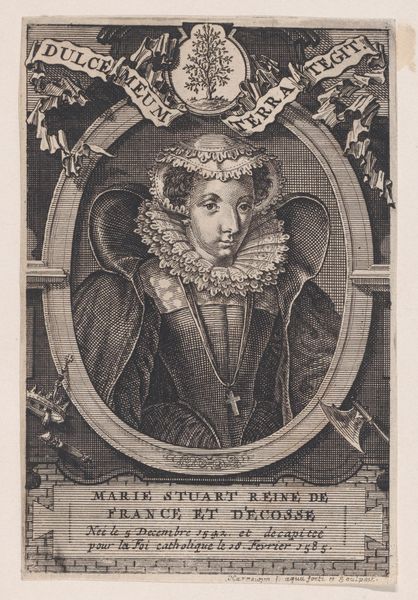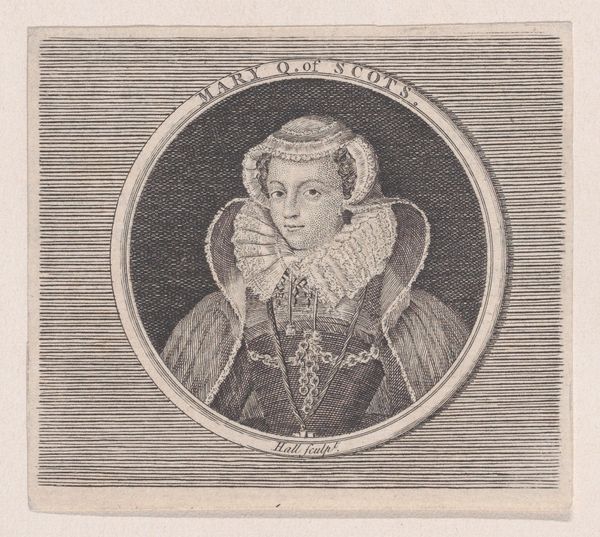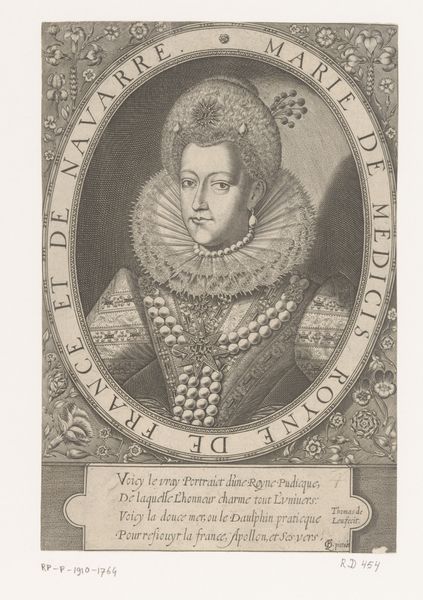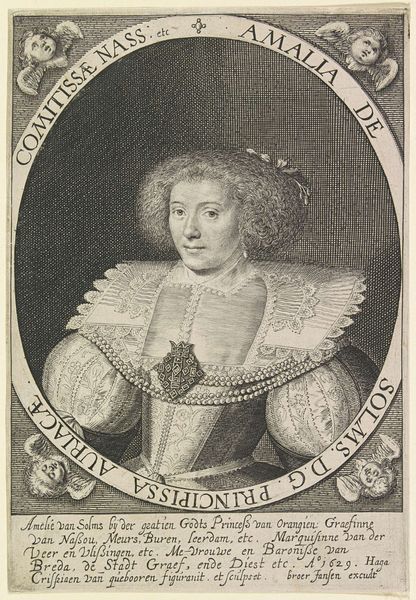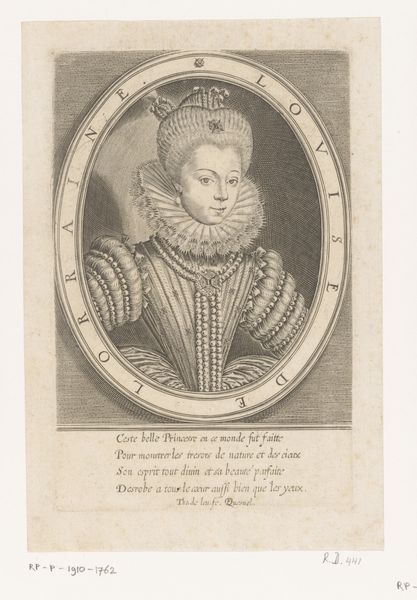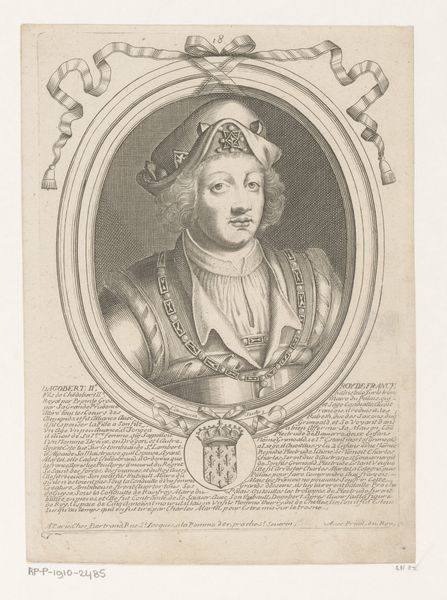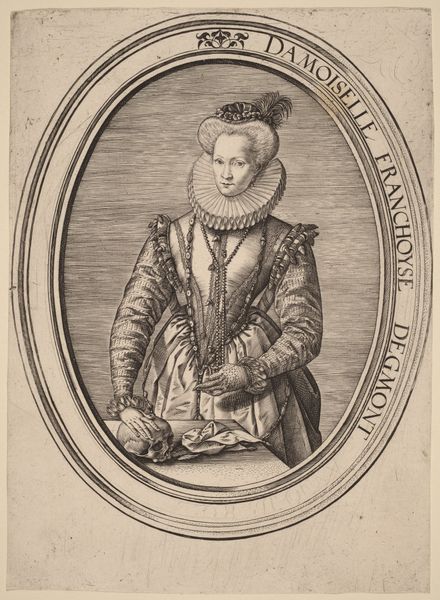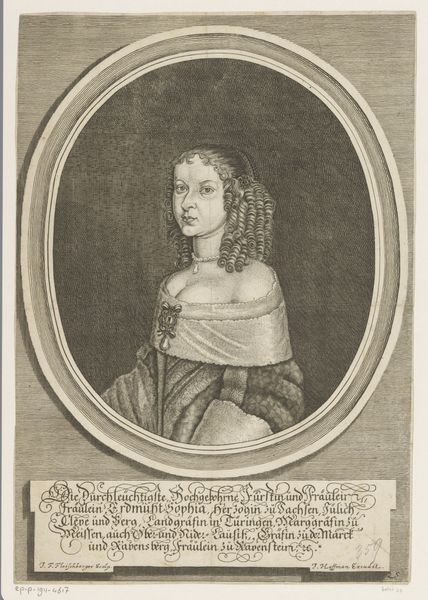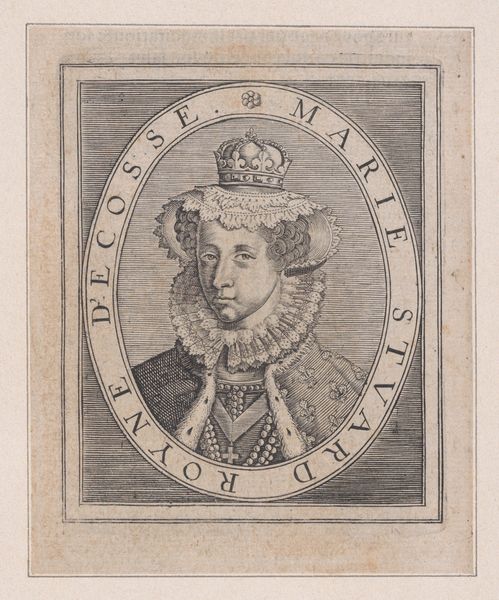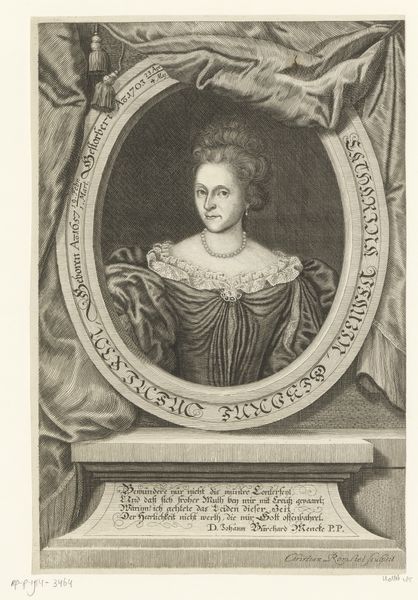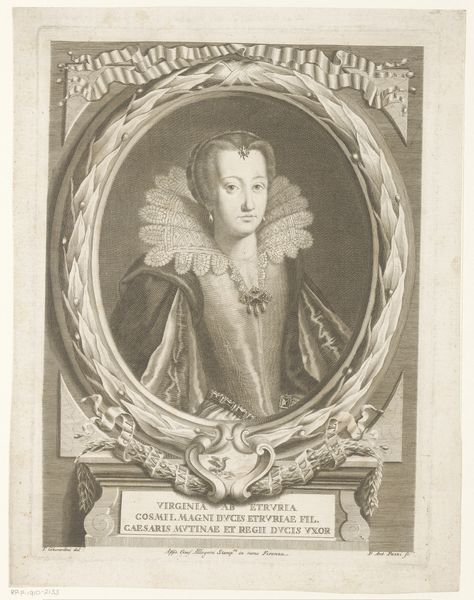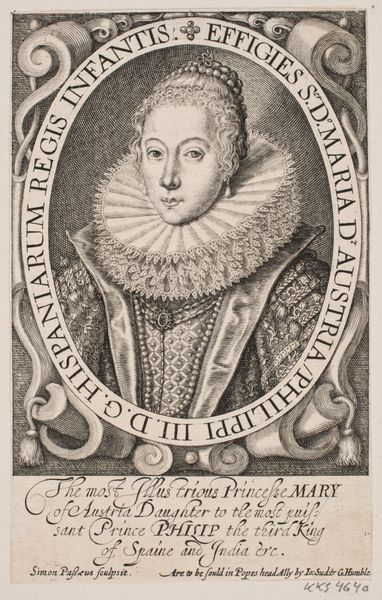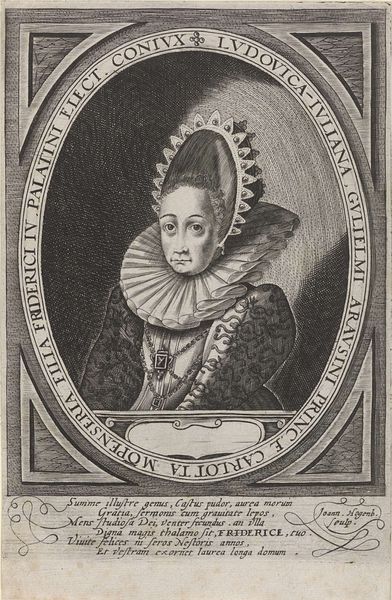
drawing, print, engraving
#
portrait
#
drawing
# print
#
old engraving style
#
pencil drawing
#
history-painting
#
engraving
Dimensions: Sheet (trimmed): 5 5/16 × 3 9/16 in. (13.5 × 9 cm)
Copyright: Public Domain
This engraving of Mary, Queen of Scots, was made by François Harrewijn in the 18th century. Encircling her portrait we find an emblematic motto ‘Dulce meum terra tegit’ – the earth covers what was once my joy, accompanied by a barren tree. This symbol of death and loss echoes through history. In medieval tapestries, the ‘arbres sèches’ symbolized spiritual barrenness, reappearing later in vanitas paintings as a reminder of mortality. The executioner's axe resting upon what looks like castle ruins is another reference to death, in this case, Mary's beheading. The cross hanging from her neck contrasts with this, representing her devotion to Catholicism. The barren tree, in particular, bears a psychological weight, representing the end of lineage and the loss of hope, engaging us on a subconscious level. This symbol has been used in art from the Middle Ages to the present, evolving from a religious emblem to a more secular symbol of existential despair. These images remind us of how symbols resurface and evolve across time.
Comments
No comments
Be the first to comment and join the conversation on the ultimate creative platform.
